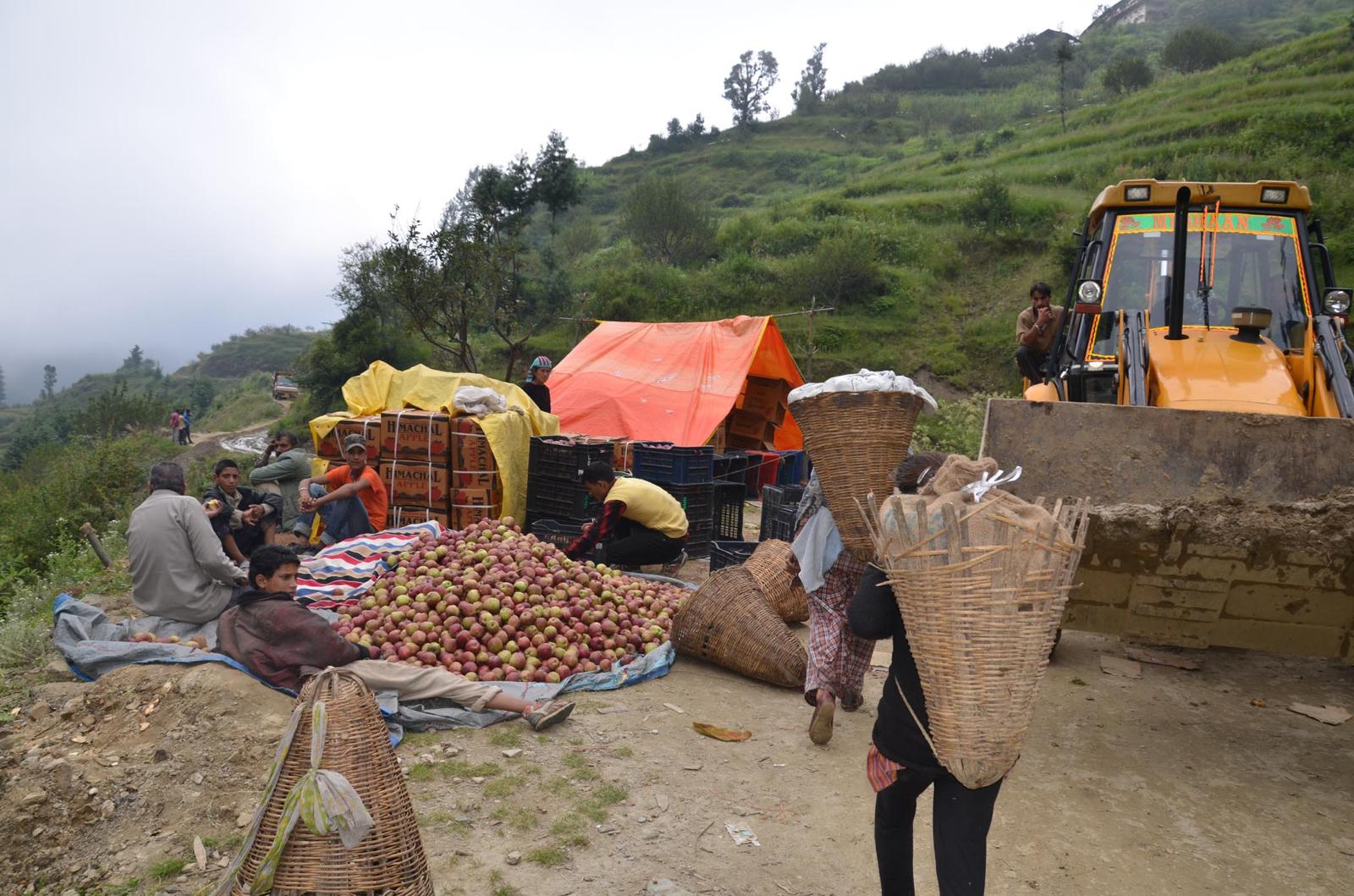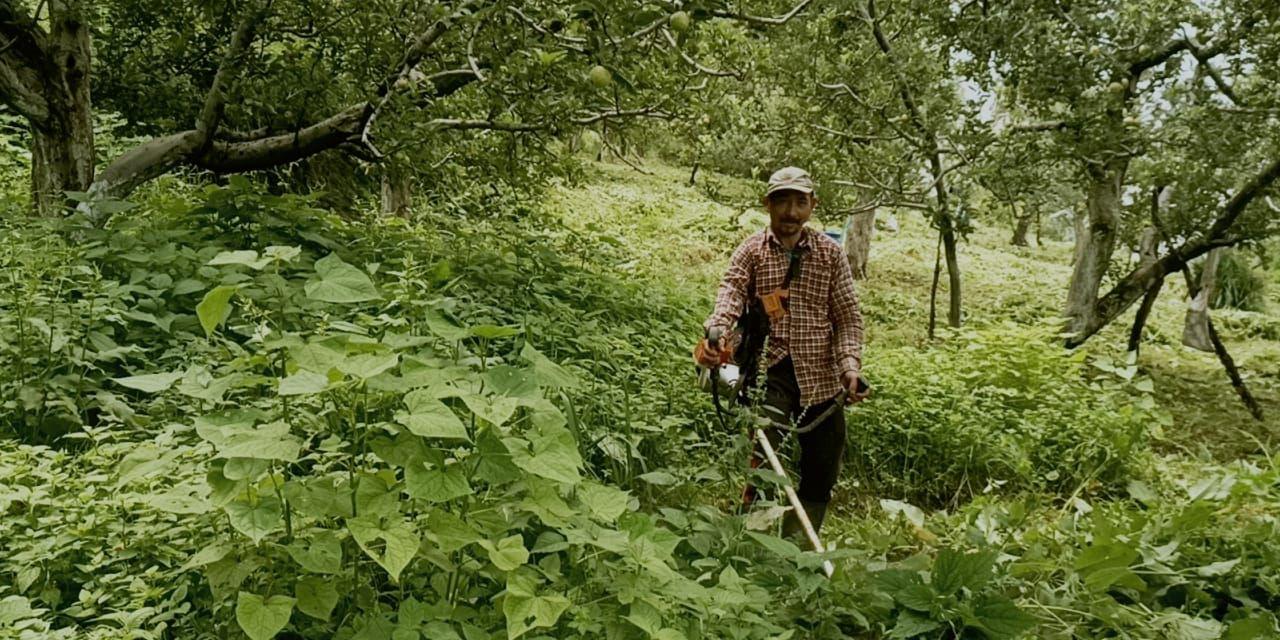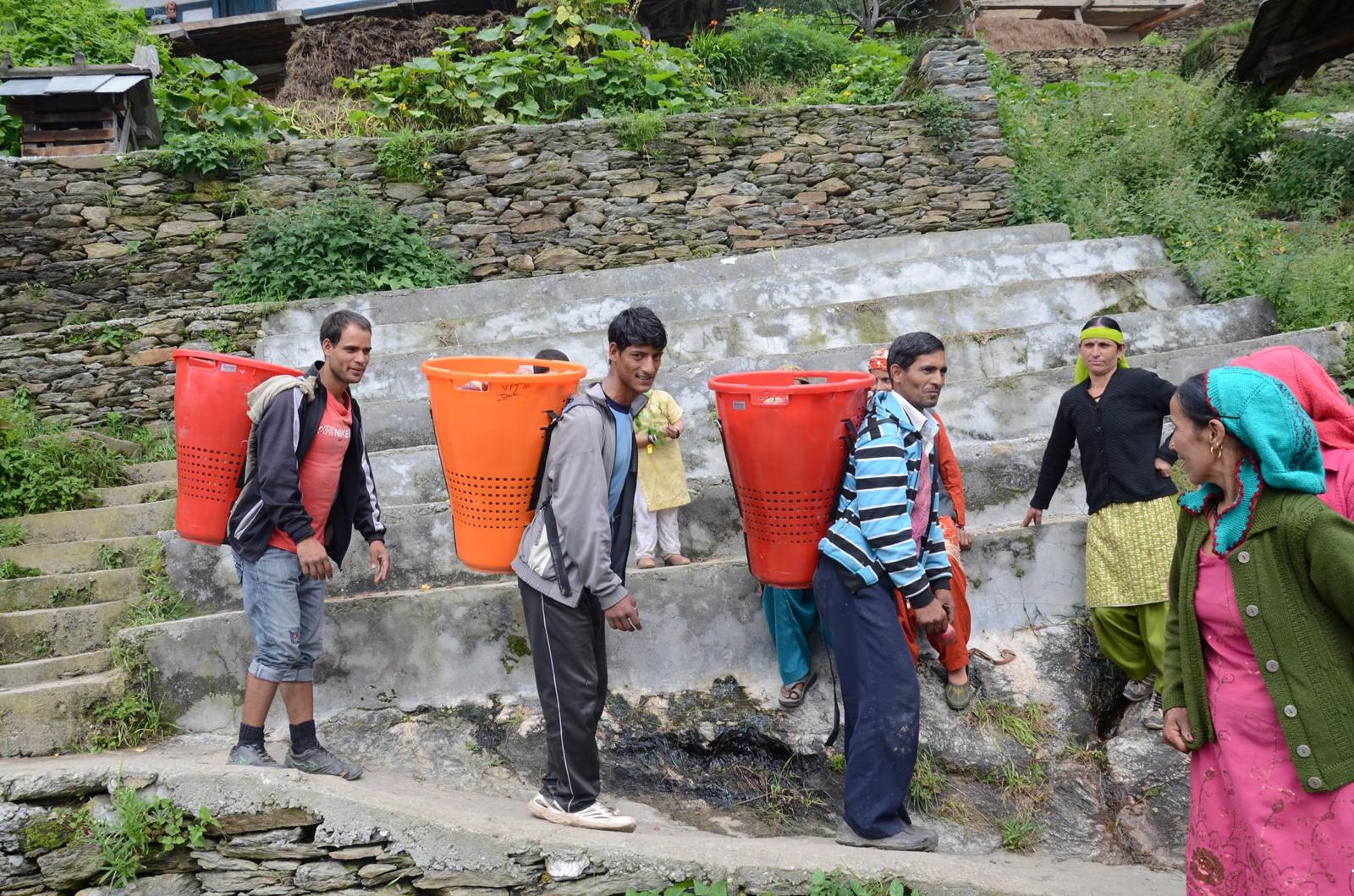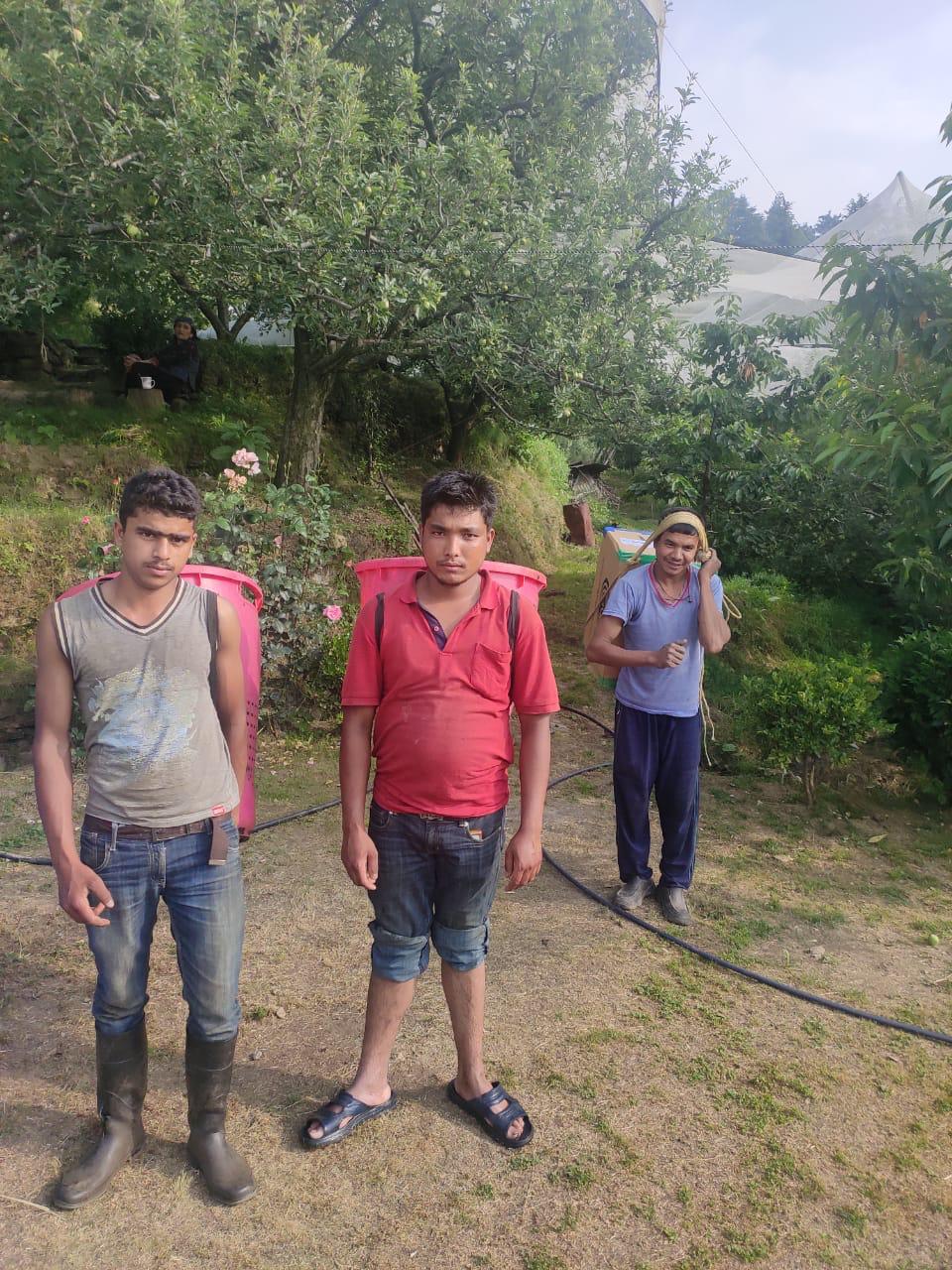

SHIMLA: The crisp Himalayan air in Shimla carries the sweet scent of ripening apples, but 16-year-old Prem Bahadur from Jajarkot, Nepal, barely notices. Nestled on a weathered wooden crate amid the glowing crimson orchards of Kotgarh—India’s celebrated “apple bowl”—he’s fixated on the dim glow of his battered smartphone.
Onscreen, a wave of Gen Z protesters floods the streets of Kathmandu, faces painted with defiant slogans like “No More Oli” and “Corruption Kills.” Their chants echo against decades of political decay—the same rot that pushed Prem, and millions like him, to seek a future across the border.
A viral clip of rapper-turned-mayor Balen Shah drops in, his gravelly voice booming over Discord-amplified beats: “This isn’t a party—it’s a purge.” Prem’s face lights up, a rare grin cracking his sun-chapped cheeks.
“Nepal achcha hoga, India ki tarah,” (Nepal will be better, like India),” he says, translating with a nod to the orchards around him that have become his reluctant second home. “Nepal will be better, like India—in development, jobs, everything. These kids back home… they’re us, but braver.”
Prem, who crossed into India just three months ago to pick apples and escape Jajarkot’s dirt roads and jobless haze, embodies the electric tension rippling through Nepal’s diaspora in India’s Himalayan belt. These young migrants aren’t just chasing survival; they’re the unsung backbone of North India’s booming horticulture sector, particularly the apple economy that generates over IRS 10,000 crore annually across states like Himachal Pradesh and Uttarakhand.
From dawn patrols thinning branches to harvest-time hauls that fill export crates bound for Delhi and beyond, Nepalese laborers like Prem make the orchards viable—without them, the industry, employing over 200,000 seasonally, would grind to a halt.
“Horticulture here? Unimaginable without us,” Prem mutters, plucking a windfall apple and biting into its tart flesh. Yet, as he spits the core into the undergrowth, his excitement sours: “Back home, we’d grow our own—if there were markets, not just mud.”
At an age when most teens scroll for memes, Prem is transfixed by the uprising that toppled Prime Minister K.P. Sharma Oli last month—a leaderless Gen Z revolt born on digital platforms, fueled by fury over corruption, unemployment, and a ham-fisted social media blackout that briefly silenced the republic’s youth.

What started in early September as scattered student sit-ins against a proposed internet curfew swelled into a nationwide inferno, with over 74 protesters dead in clashes with security forces, public buildings torched in Kathmandu—including the historic Singha Durbar—and billions in alleged graft scandals unearthed daily.
Organized via the “Youths Against Corruption” Discord server, the movement bypassed traditional parties, demanding transparency, job creation, and an end to the nepotism that funnels opportunities to elite kin while youth unemployment hovers at just over 20%.
Oli’s resignation on September 9 paved the way for an extraordinary transition: former Chief Justice Sushila Karki, a 73-year-old anti-corruption stalwart and Nepal’s first female prime minister, was selected as interim leader through a digital consensus poll on the same Discord channels that ignited the blaze.
Sworn in on September 13, Karki’s six-month mandate is laser-focused on stabilizing the economy—reeling from post-COVID debt and 2025’s cascade of scandals—and shepherding the country to snap elections by March 5, 2026.
Her cabinet, appointed days later, includes technocrats and youth representatives, a nod to the protesters’ calls for fresh blood. Yet, as Karki urges calm from Singha Durbar’s scorched halls, whispers of external meddling—China’s infrastructure loans or India’s border diplomacy—linger, with migrants like Prem fearing the revolution could be hijacked.

For the estimated 4–5 million Nepalese migrants in India—many Gen Z laborers from remote districts like Jajarkot, Kailali, Jumla, Rukum, and Gulmi—this cross-border awakening stirs a cocktail of exhilaration and exhaustion. They form the unseen spine of India’s northern economies: harvesting apples in Himachal Pradesh’s Shimla valleys, laying bricks in Uttarakhand’s Dehradun suburbs, or brewing tea in Assam’s misty estates.
Remittances from this diaspora alone top $1 billion yearly, propping up Nepal’s GDP by nearly 25%, yet it’s a lifeline born of despair—weak governance, chronic unemployment, and leaders who, as one migrant puts it, “looted Nepal and played in foreign hands.”
“We work so hard here, live in poor conditions so that we can save money—but who wouldn’t want to live and work in their own homeland?” says Bhim Bahadur of Rukum, his voice steady but laced with longing. “If we could work hard here and contribute to local development, imagine how much we could contribute to Nepal’s development. All we need is better basic amenities and an opportunity—but we lack everything right now.”
Recent reports underscore the depth of these concerns, painting a portrait of migrants caught between hope and precarity. In September, Nepal’s turmoil prompted hundreds of workers to return home from India, driven by family worries and fears of deepening instability that could exacerbate the very economic fragility they’re fleeing.
Bournemouth University researchers documented a surge in returns post-upheaval, with migrants voicing frustration over harassment and exploitation en route. The Atlantic Council noted the uprising’s economic roots, warning that Nepal’s remittance-dependent economy—where migrants like these contribute 27% of GDP, per Human Rights Watch—is teetering on the edge, with 2025’s corruption scandals eroding trust and spurring more outflows.
Other studies, like those from the Center for the Study of Labour and Mobility, emphasize the political-economic inequality and discrimination faced by Nepali migrants in India—often seen as a rite of passage amid Nepal’s instability. Health vulnerabilities, including infectious diseases, add another layer of concern for returnees, as detailed in PMC reports on seasonal migrants.
Yahoo reports echoed this, with workers expressing long-term dread: if March’s elections fail to deliver jobs and stability, a fresh wave of exodus could follow—straining both nations.

Karen Bahadur, a 35-year-old from Tikapur in Kailali district who’s toiled on Shimla’s construction sites for over a decade, echoes the sentiment while sorting bricks at a roadside stall. “Nepal’s governance is a joke—unemployment is the big ghost, and no politician has touched it,” he tells this reporter, wiping sweat from his brow.
“We threw out the monarchy in 2008 thinking it’d bring India-like growth, the dawn of Loktantra (people’s rule). But every leader since—KP Oli, Sher Bahadur Deuba, Pushpa Kamal Dahal Prachanda—stuffed their pockets and danced to Delhi or Beijing’s tune. Now, with Karki in charge just to clear the path for March polls, we hope parties finally shift mindsets. Elect pro-people leaders, or it’s the same exile for another generation.”
Further north, along Uttarakhand’s rugged Gangotri highway near Uttarkashi, the diaspora’s grievances take on a literal shape: miles of smooth asphalt snaking through pine-cloaked passes—a far cry from Nepal’s potholed trails. Bhim Bahadur, 42, from Darchula district in Nepal’s far west, pauses his jackhammer beside a road crew’s steaming kettle of chai.
For eight years, he’s worked with Indian contractors here, pounding rock into submission for tourism-boosting blacktop. “If Nepal had such roads,” he says, gesturing to the ribbon of tarmac gleaming under the October sun, “I would not have any need to come here. Health, education, employment—that’s what Nepal wants.”
In nearby apple farms, 17-year-old Shibu Thapa from Gulmi district—another Gen Z exile—pauses from thinning branches to vent about cultural drift. “Nepal’s heart beats like India’s—same festivals, same hills—but leaders push to distance us, cozying up to others for power,” he says, referencing opaque Belt and Road deals that locals blame for environmental ruin.
Shibu, who followed the protests via smuggled VPNs during the blackout, donated a week’s wages to relief funds. “Balen Shah’s clips kept us going—his raps about clean streets, no more bribes. If he runs in ‘26, youth like us might actually vote from abroad.”
Shah, the 33-year-old Kathmandu mayor who stunned the establishment with his 2022 independent win, has become the uprising’s unofficial bard. He backed Karki’s appointment but urged protesters to “build, not burn,” positioning himself as a bridge between street rage and ballot-box reform.
Yet beneath the buzz, a chasm of doubt yawns wide. Deepak Kumar, 28, from Gulmi, who trades shilajit and travels frequently between Nepal and the markets of Himachal and Sikkim, recalls the vandalism that scarred the protests: torched ministry buildings, looted archives.
“It hurt—public property is the nation’s, not for rage,” he says, appealing for peaceful paths ahead. “Youth back home are right to fight, but no external powers should mislead them, exploit sentiments for gains. We’ve seen it before.”
Nabaraj Gharti, 22, from the Kosi region of Nepal who works in Gangtok, Sikkim, nods grimly. “The real test is March. Karki’s interim gig buys time, but if elections recycle the corrupt or crown shiny new thieves, we’ll keep crossing this border. Nepal’s youth drove this change—now they must guard it.”
Analysts see glimmers of hope in the diaspora’s vigilance. Carnegie’s analysis of the Gen Z protests points to economic distress and rampant 2025 corruption cases as the tinderbox, with migrants’ stories amplifying calls for accountability. In Uttarakhand’s labor hostels and Sikkim’s border towns, WhatsApp groups hum with election mock polls favoring Balen Shah or Karki allies.
Hundreds have already returned across the open frontier, swapping hardhats for volunteer gigs in voter education drives, as noted in post-turmoil migration trackers.
As dusk paints the Shimla hills gold, Prem pockets his phone, the Discord pings fading to cricket chirps. “If Nepal becomes like this—jobs in the valleys, not just dreams—I’ll go home for good,” he says, gesturing to the orchards that fed his family last monsoon.
For now, these border dreamers hold their breath, their remittances a threadbare safety net, betting that Nepal’s fragile fire forges progress—or flickers out in familiar shadows. The March 2026 ballot looms as both promise and peril: a chance to heal divides, or etch deeper ones in a nation long starved of trust.